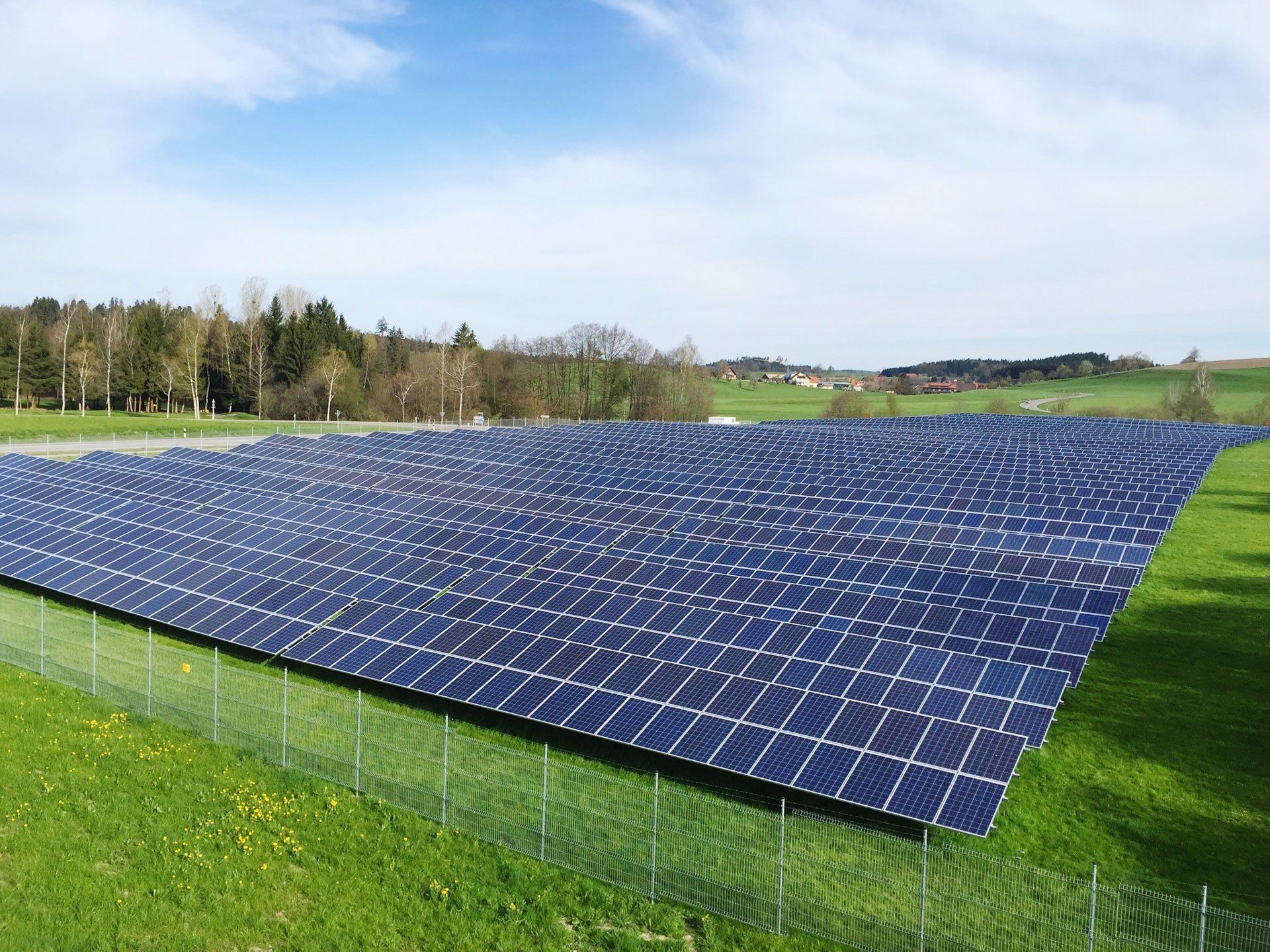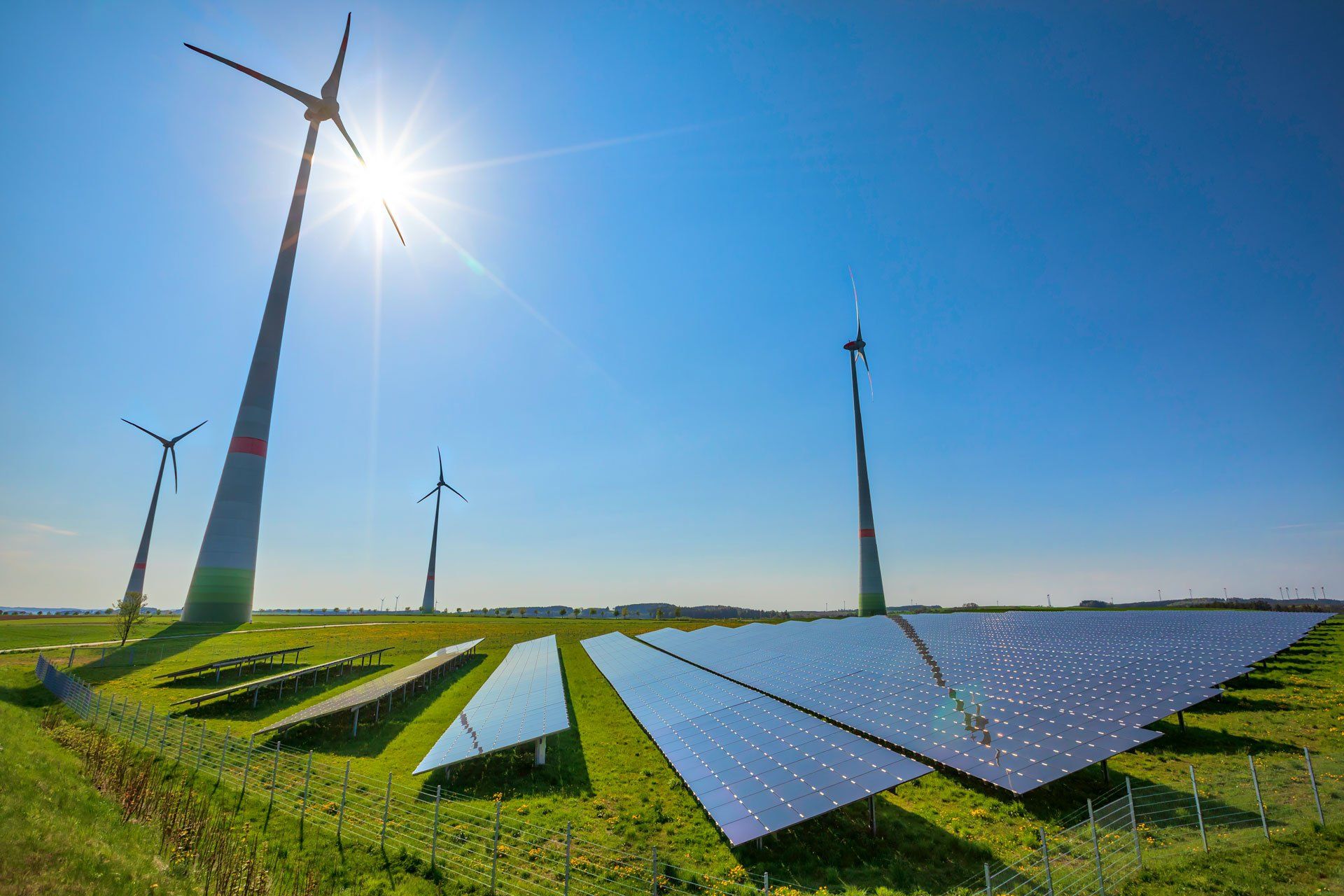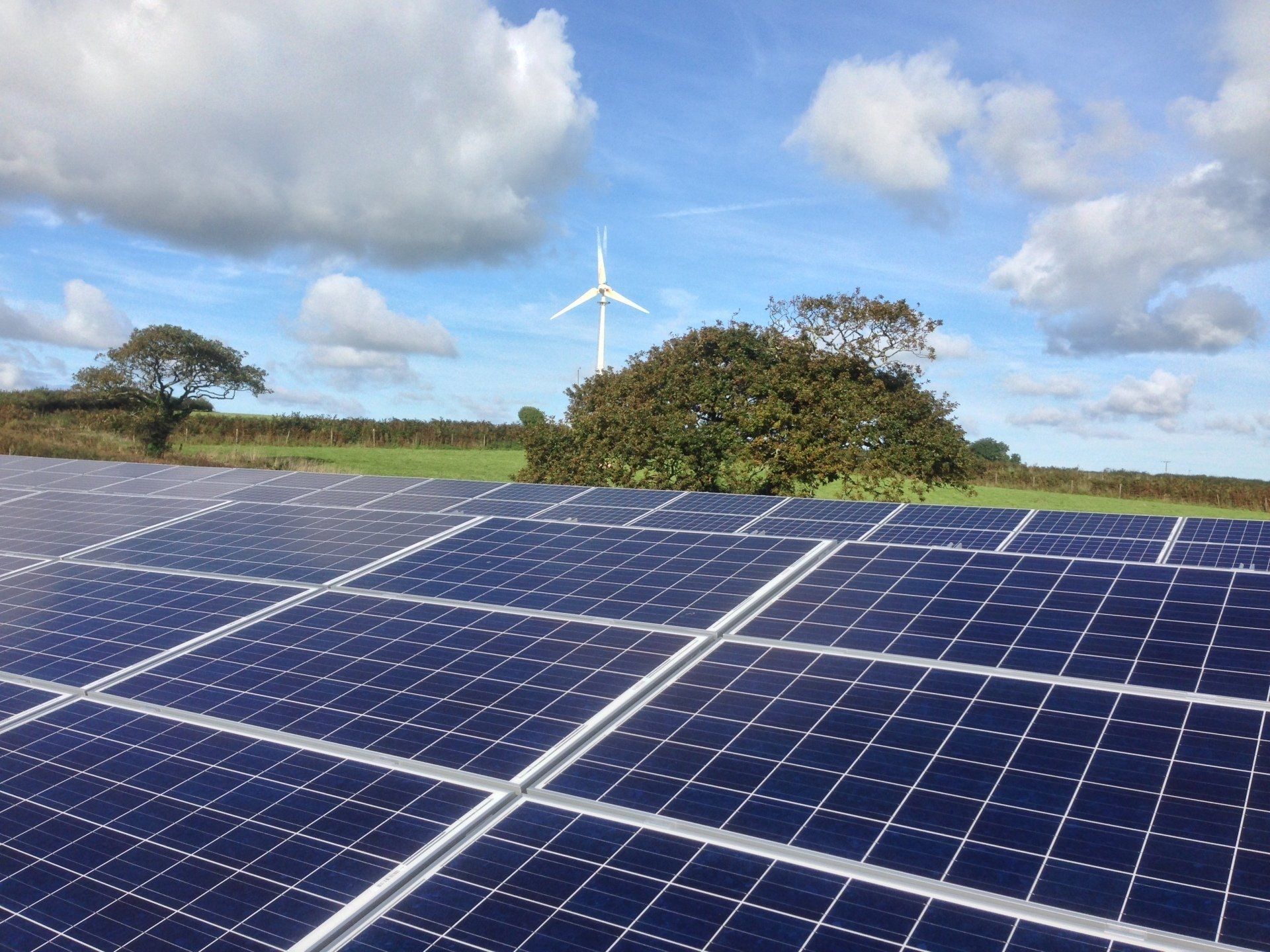What Happened To The Capacity Market
F&S Energy • 7 May 2019
EU Court rules the Capacity Market illegal
The capacity market was designed to make sure there is always enough supply to meet peak electricity demand, even on cold and dark winter evenings when there is little wind. It covers the electricity market in Great Britain only, with Northern Ireland being part of an all Ireland scheme.
Contracts were awarded to firms that offered to supply electricity generating capacity during the periods of peak demand and they were obligated to deliver against their Capacity Obligation at any time of System Stress Event during the Delivery Year, or face a financial penalty. The Delivery Year runs from 1 October to 30 September. Firms could also offer to turn down electricity demand instead – a process called demand-side response (DSR).
Existing power plants were able to get contracts for one year at a time, or three years, if they carried out upgrades. New power plants were able to get 15-year deals. However, crucially, DSR were only offered one-year contracts and this is why Tempus Energy – a DSR firm challenged the capacity market approval.
Contracts were awarded to the lowest bidder in a series of auctions. The amount of capacity bought in the auction was decided in advance by the government, based on advice from the electricity system operator, National Grid.
The capacity market was one of two key measures introduced in the 2013 Electricity Market Reform. The other was contracts for difference (CfDs) to support low-carbon electricity generation.
The capacity market aimed to solve the problem that the wholesale electricity market failed to give sufficient incentives to utilities to build new power plants or, in some cases, to keep old plants open until the end of their useful life as subsidised low-carbon sources generate electricity at near-zero marginal cost, depressing wholesale prices. Another is that regulators tend to cap the level that prices can reach when supplies are tight.
Without a solution to this problem, there was a risk that demand would exceed supply, leading to blackouts. Before the 2014 approval, the UK government successfully persuaded the European Commission that the capacity market was needed to prevent such a risk. Since the capacity market was introduced in 2014, negative headlines have dried up and public concern over blackouts has eased.
Critics argued the UK never needed a capacity market and that it was a politically driven project to deliver large new gas-fired power stations, which have not materialised and were also not needed. These critics say capacity needs have been systematically overestimated by an average of 1.5 gigawatts (GW), equivalent to a large coal or gas plant – and that a “strategic reserve” would be cheaper this would hold a few power plants in reserve in case the market failed to deliver.
The capacity market mostly awarded contracts to large old power plants, including the coal-fired power stations that the government wants to close by 2025. This means government policies are pulling in opposite directions - supporting coal, but also encouraging it to close. However, the market has nevertheless brought forward a lot of new capacity nearly 4GW of small new flexible gas and diesel-fired “peakers” have won contracts to date, as well as around 1GW of battery storage.
In total, contracts worth £5.6bn have been awarded under the capacity market so far since 2014. This has been spread through a number of T-4 and T-1 auctions, as well as several one-off rounds covering each winter from 2016/17 through to 2021/22. The main auction is called T-4 because it is held four years in advance. This allows new power stations time to be built. A smaller second auction is held one year ahead (T-1) to fill in any gaps. The T-1 auction is also designed to reserve some capacity for DSR.
Capacity market prices peaked in the 2016 T-4 auction for 2020/21, which cleared at £22.50 per kilowatt (kW). This fell to £8.90/kW in the T-4 auction for 2021/22. The T-1 rounds have been even cheaper, at £6/kW for winter 2018/19 and £6.95/kW for a supplementary auction covering winter 2017/18. In general, prices have come in far lower than expected. This means either that there was a larger pool of available capacity than thought – and, hence, little need for the market – or that the auctions have delivered security of supply so efficiently as to keep costs low for consumers. Most contracts so far have gone to large old power stations. This means the scheme would have paid large sums to these old plants if it had continued – or if it is re-approved without changes.
The EU court ruling has the effect of making the UK’s capacity market illegal. This is because it annulled the 2014 European Commission decision to approve the measure, concluding that the 2014 approval process – which was based on a one-month preliminary “phase 1” investigation – was too short. The approval had: “incomplete and insufficient content owing to the lack of appropriate investigation.” The ruling says the commission should have had “doubts” about whether or not the scheme was compatible with state-aid rules. Consequently, it should have launched a “phase 2” formal investigation into the scheme. Finally, the ruling annuls the 2014 approval.
For the UK government, this ruling is a “procedural” matter for the commission, saying, “The design of the capacity market has not been called into question, and the focus is therefore on ensuring it can be reinstated as soon as possible.”
Capacity market participants were informed by the GB electricity system operator that the judgement merely “suspends” the scheme and that it will be on hold until “[it] can be approved again”. This language hints at an expectation that the scheme can be re-approved as-is. The commission itself also appears to be viewing the ruling as a largely procedural matter.
“However, the reason the court upheld the challenge was precisely because of the serious concerns raised by the design of the scheme. Therefore, the nature of the capacity market was very much at the heart of the decision.” The court ruling did not adjudicate on the substance of the concerns raised by Tempus Energy’s case. It merely says that their existence should have given rise to “doubts” – a legally defined term in this context – and that this alone should have triggered further investigation. Nevertheless, the ruling will effectively force the commission to consider the concerns of Tempus and others during the formal investigation that it now seems committed to launch. During this process, it will have to gather evidence from interested parties – a step it failed to take in 2014.
Generators will be without their expected capacity payments this winter. This ruling also means considerable uncertainty about how the capacity market will operate going forwards. As a result, some will be considering early closure, or putting planned projects on hold.”
After the ruling, the UK government quickly announced that the market would enter a period of “standstill”, during which no payments would be made and no further auctions would be held. This move was required under the UK’s capacity market legislation. The government says it is: “Considering the judgement in detail alongside the European Commission, and is working to support the commission as they consider the legal options available to them.”
One option is for the commission to appeal the ruling within two months – the UK government cannot do so – but an appeal could take many months and would have an uncertain outcome.
Instead, the commission will probably have to go through its formal investigation process in order to re-approve the scheme. The GB system operator says it “can’t speculate” on how long this will take. It also appears likely that the UK scheme will require amendments before it can be re-approved. This is because it was the first capacity market considered by the European Commission and, hence, was something of a test case.
Changes to the French and Polish schemes before they were approved included allowing power plants in other member states to enter the market, giving preference to low-carbon generators and giving greater access to DSR participants in contrast to the British scheme. The UK scheme only allows the cables that supply power from neighbouring countries to participate, not the foreign power plants themselves. It also restricts DSR providers to one-year contracts – not the 15-year deals available to new power stations – whereas the Polish market offers DSR contracts of up to five years.
Another complication is the capacity payments already made so far. The lion’s share of these – some £378m – were made under a one-off supplementary auction for last winter, which has separate state-aid approval. This means they are not immediately rendered illegal by the EU ruling, which only annulled the main 2014 approval. Yet they could still fall foul of this process later on. The lower amounts paid so far under the main capacity market scheme, meanwhile, are technically illegal and could be subject to claw-back. The government says it “is taking no steps to recover payments at this stage, and hopes that this can be avoided”. The UK’s decision to leave the EU makes for yet another complication in this process. It is due to leave at the end of October 2019, by when the capacity market case is unlikely to have been resolved. However, under the draft UK-EU withdrawal agreement, EU state-aid rules would continue to apply during a transition phase until 2021 or 2022. The draft political statement on the future UK-EU relationship, meanwhile, also says the UK would maintain a “level playing field” on state-aid.
The UK government says it remains committed to the capacity market and will seek its re-approval as soon as possible. Pending this re-approval, it will seek one-off permission to run a capacity market for next winter. The auction would need to take place next year and would need to at least be in the pipeline before any power stations decided to close. As explained in more detail, below, closures are most likely to be announced before April 2019. This means the timelines are extremely tight. Meanwhile, the government is telling generators that they should continue to abide by their capacity market contracts, even though the contracts currently hold no legal force.
The uncertainty created by the EU ruling also extends to larger gas plants that were due to be built. The “Keadby 2” gas plant in Lincolnshire has already broken ground and may still go ahead, whereas a planned plant at the site of the former Eggborough coal plant in Yorkshire had yet to secure a capacity contract and may be put on hold. For French nuclear operator EDF, the longer-term future of the UK capacity market will weigh on its decision to invest in extending the life of its current reactor fleet.
On 10 April 2019, the Electricity Capacity (No. 1) Regulations 2019 and the related amendments to the Capacity Market Rules came into force. The Secretary of State subsequently determined that the delayed T-1 Auction should be rearranged.
The letter from the Secretary of State to the Delivery Body confirming this decision has been published on the BEIS website. It can be found here.
As a result of this decision, the delayed 2018 T-1 Capacity Market Auction Timeline (for October 2019 delivery) has been finalised.
Key dates:
Auction Withdrawal Window opens 12-25 April 2019
Auction Webinar 30 April 2019
T-1 Mock Auction 31 May 2019

F&S Energy, a leading independent PPA (Power Purchase Agreement) provider in the United Kingdom, have secured a deal with Limejump Energy to buy the small-scale PPA portfolio which includes all renewable generators that are generating under 50GWh per annum, and the associated import customers. Moving customers over to F&S Energy began on May 1, 2024. To make the transition as smooth as possible, previously agreed rates will be honoured for a full year before reverting to F&S rates. F&S Energy purchases power from renewable generators throughout the UK, offering market leading rates and top levels of customer service for all of their clients. They sell the power they purchase on to business customers in the industrial and commercial sector. F&S Energy has released the following statement: “We are thrilled to take on small-scale customers from Limejump Energy into our portfolio. We thank all members of staff at Limejump Energy, and our team, for their efforts in ensuring a smooth transition of customers. We are appreciative of Ofgem for recognising F&S Energy as a reliable financial party, for generation customers, after successful completion of their trade sale compliance assessment further strengthening our position as a leading UK PPA provider.”

The Accelerated Loss of Mains Change Programme is an industry wide project that is taking place throughout the UK, being run by the National Grid and Distributors. The focus of this programme is to upgrade or replace embedded generation assets where possible. These new requirements will improve long-term energy network stability and prevent any embedded generators from being cut off. If your generator is between 11kW and 50MW and was installed before February 2018, you may have a type of loss of mains protection that is more sensitive and may cause them to unnecessarily trip. Funding is now available to upgrade your generator to help deliver a zero-carbon electricity grid through the ALoMCP. By applying for this, you could potentially claim thousands of pounds to help make mandatory Loss of Mains protection changes for your sites. Funding will reduce in Spring in 2022 and the final deadline to apply is 10th May 2022, otherwise generators could be subject to an enforcement programme. Please follow https://www.ena-eng.org/ALoMCP/ to apply for funding. Alternatively you can contact your Distributor as they will have an allocated team to give you a hand. If you need any help finding out who your distributor is, please give us a call on 01245 690151 or email us at info@fs-energy.co.uk .

F&S Energy has teamed up with leading solar PV optimising and monitoring company, HIT Energy Services. It will mean their hundreds of customers will get market-leading rates for the excess electricity they produce, with this green energy then helping to power the businesses we supply around the U.K. The UK-based company work with farmers, agricultural firms and landowners on existing systems to carry out a health check and monitor the systems using their award-winning platform. F&S Energy has provided a route to allow this green energy to be passed on to other environmentally-conscious businesses, with everyone benefitting. “Because of the rise in energy prices, what is produced from solar is more valuable than ever,” said Simon Hopkins of HIT Energy Services. “We have been keen to help our clients make the most from what they produce and do not use in their business operations. This new partnership is perfect as F&S Energy understands the renewables sector and is as passionate as us about helping people live greener lives.” F&S Energy managing director Steven Funnell said: “At F&S we have always taken the approach of doing the right thing by our customers and letting our reputation do our marketing for us. We see HIT as a perfect match to partner up with and to offer their services to our customers.” HIT Energy Services’ work has been recognised with a string of accolades - at Lamma 2020, the company scooped the online innovation award, while it also beat hundreds of other products to be ranked seventh in the Midlands Tech 50 list. Now, the innovations its engineers have created to make solar a reliable source of power are set to benefit many more businesses. Simon added: “We have been keen for our industry to help out in this time of crisis, while also providing a boost to the sector. Our link-up with F&S Energy will mean everyone benefits, from the Solar PV owner to the businesses being powered by cheaper, greener energy

Peer-to-peer trading not only allows consumers to know exactly where their power is coming from and the confidence to know that they are truly being supplied from a renewable source. But also provides a financial benefit for both electricity consumers and the generators through a discount on industry costs

F&S Energy, a leading independent PPA provider and FIT licensee, have secured a deal with Bristol Energy to purchase the entire renewable energy generator portfolio (PPA contracts), along with Bristol Energy’s commercial FIT customers and the transfer of 1 staff member. Earlier this year Bristol City Council announced its intention to put Bristol Energy up for sale, and over the past few months Bristol Energy have been working in the background to find the best placed homes for their customers and contracts. Previously it was announced that the business customers would be moved to Yu Energy and the domestic customers will be transferred over to Together Energy. Concurrently to this, the deal to place the PPA portfolio was agreed with F&S Energy with the contracts being novated on the 1st of October. The combined contracted capacity moving to F&S is circa 91MW. F&S Energy purchase power from renewable generators throughout the UK, offering market leading rates and top levels of customer service for all of their clients. They sell the power they purchase on to business customers, providing each customer with 100% true renewable power sourced from local generators at prices that beat traditional suppliers. Quote from Steven Funnell MD F&S Energy: “We are very pleased that Bristol City Council chose to move Bristol Energy's renewable generator portfolio over to F&S Energy. We welcome these new customers and will continue to give them the excellent customer service that our existing customers have become used to.”




